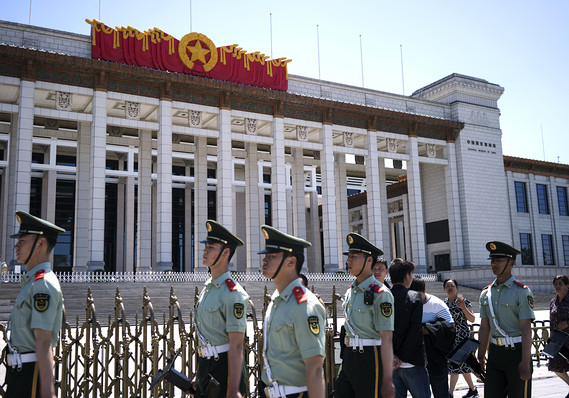 Bloomberg News
Bloomberg News Looking for an investing strategy as the U.S.-China trade war rolls on? There may be an ETF for that, whether you feel most comfortable with as little risk as possible, or want to test-drive an exotic instrument devised for market turbulence.
One of the most time-worn strategies is to follow the herd into what’s often called safe havens – assets that may not gain much in value, but should retain their value and benefit a bit when investor shy away from riskier choices.
The yield on the 10-year U.S. Treasury note TMUBMUSD10Y, +3.46% has declined about 50 basis points since the start of August. Yields fall as bond prices rise, so the onslaught of investor demand has pushed prices up nearly 2% in that time, according to FactSet. In the month to date, gold ETFs like The iShares Gold Trust IAU, +0.07% and SPDR Gold Shares GLD, +0.09% have both gained more than 9% in that time. GLD is among the ETFs receiving the biggest share of inflows this month, according to www.xtf.com. It picked up over $793 million in the week ending September 23, according to Jefferies analysts.
Read: A popular product based on Wall Street’s ‘fear gauge’ vanished— Here’s what came next
On the slightly less risk-averse side, Jim Ross, chairman of the Global SPDR business at State Street, suggests looking to stocks that have less exposure to global revenues in general, and to China revenues in particular. That could include sectors like utilities or consumer staples which should hold up no matter what the market cycle. One example might be the Consumer Staples Select Sector SPDR fund XLP, +0.76% , which has gained 1.25% so far this month, even as the S&P 500 has lost nearly 4%.)
“These things have proven to be very quickly self-correcting,” Ross told MarketWatch earlier in August after U.S. stocks saw their worst day this year. “My view is invest and build your portfolio for the long term and not lose sleep over what is a very strange 3% down day.”
See: Peak oil? This T. Boone Pickens fund is swapping fossil fuels for renewables
For investors looking to be a bit more proactive, Will Geisdorf, ETF strategist at Ned Davis Research, suggested considering investing in Vietnam, a rare “beneficiary” of the trade war, in his words, thanks to China’s practice of re-routing some exports to skirt U.S. tariffs. Van Eck’s Vectors Vietnam ETF VNM, +0.44% has the most concentrated exposure to that country.
A more creative suggestion from Geisdorf is the AGFiQ US Market Neutral Anti-Beta fund BTAL, -0.29% . It aims to manage beta, a measurement of how risky a particular stock or other security is in relation to the rest of the market. BTAL holds long positions on stocks with the lowest beta and short positions on those with the highest beta – that is, it bets that those securities will decline in value.
BTAL has done well in the recent choppiness – it’s up over 10% over the past month, according to FactSet. The index on which it’s based, Dow Jones U.S. Thematic Market Neutral Anti-Beta Total Return Index, rebalances monthly.
Related: Here’s an ETF that proves there is intelligent life in the universe after all










Add Comment